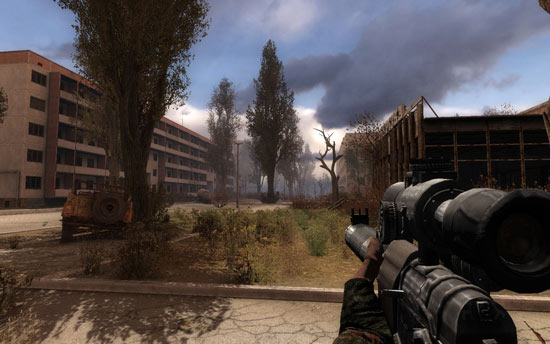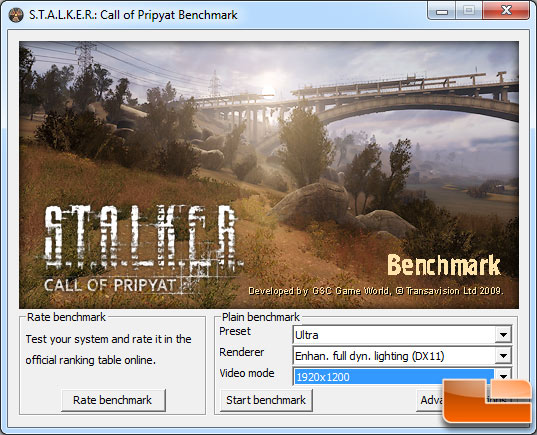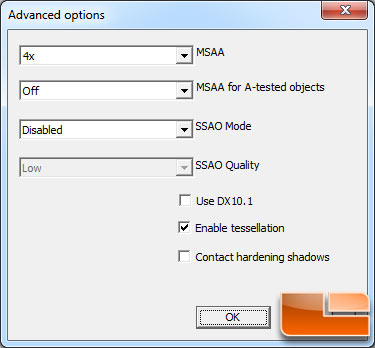NVIDIA GeForce GTS 450 SLI versus ATI Radeon HD 5770 CrossFire
S.T.A.L.K.E.R.: Call of Pripyat

The events of S.T.A.L.K.E.R.: Call of Pripyat unfold shortly after the end of S.T.A.L.K.E.R.: Shadow of Chernobyl following the ending in which Strelok destroys the C-Consciousness. Having discovered the open path to the Zone’s center, the government decides to stage a large-scale operation to take control of the Chernobyl nuclear plant.
S.T.A.L.K.E.R.: Call of Pripyat utilizes the XRAY 1.6 Engine, allowing advanced modern graphical features through the use of DirectX 11 to be fully integrated; one outstanding feature being the inclusion of real-time GPU tessellation. Regions and maps feature photo realistic scenes of the region it is made to represent. There is also extensive support for older versions of DirectX, meaning that Call of Pripyat is also compatible with older DirectX 8, 9, 10 and 10.1 graphics cards.

The game S.T.A.L.K.E.R.: CoP has no internal benchmarking tools built into the game engine, but they do have a standalone benchmark available that we used for our testing purposes. The screen capture above shows the main window of the benchmark with our settings. Notice we are running Enhanced Full Dynamic Lighting “DX11” as our renderer.

Under the advanced settings we enabled tessellation and 4x MSAA. We didn’t enable ambient occlusion as we wanted to use these test settings for mainstream cards down the road and these settings should be tough enough to stress any and all DX11 enabled video cards.

Benchmark Results: With just a single card the performance gap at 1920×1200 is minor, but the NVIDIA GeForce GTS 450 cards in SLI scale nearly 15% better than ATI CrossFire. This widens the performance gap between the cards when run in a multi-GPU gaming PC!

Comments are closed.